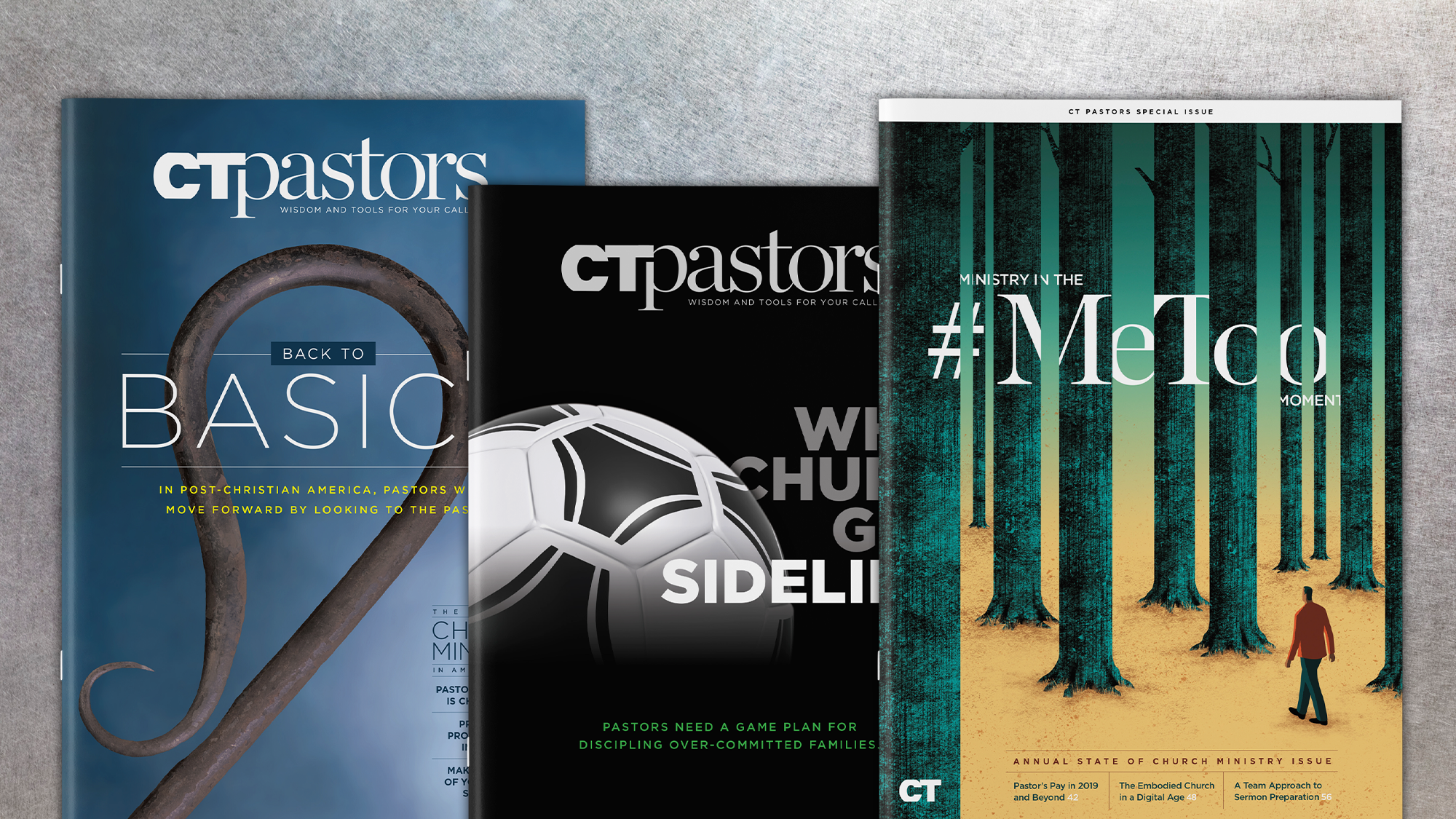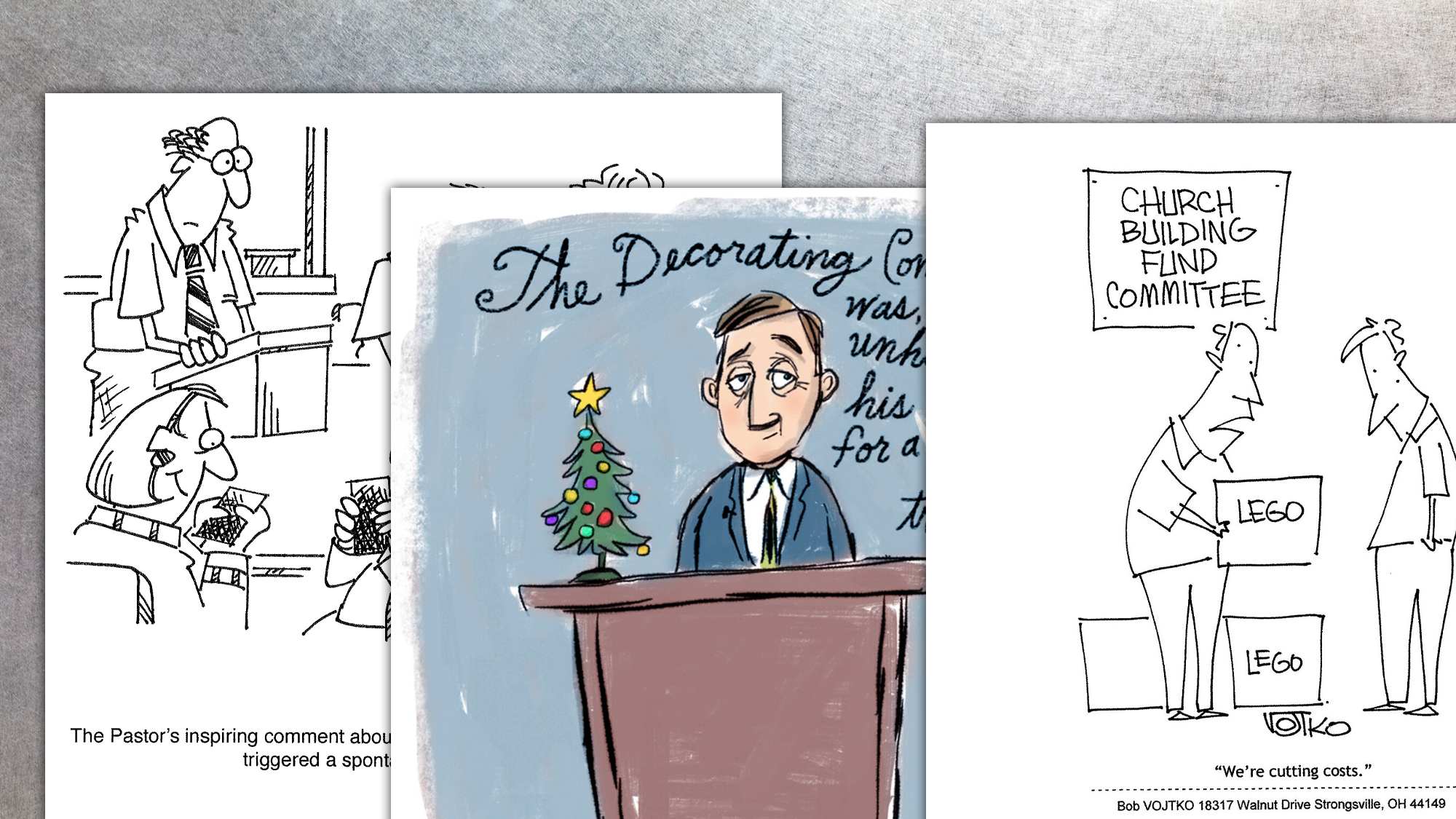Imagine a church sign that says, "Welcome to our church! We are a cold, confused club, and you probably won't like it here. Worship service at 10:30." No one would be dumb enough to put that message on a church sign, but some churches are sending that message by the appearances of their buildings.
It may sound unspiritual, but it's a fact: we're all affected by the spaces we occupy—even church spaces. The curb appeal of your church provides the first impression to your visitors. Then, as newcomers move throughout your buildings, each space announces new messages as effectively as a flashing marquee. If they "see" or "hear" a negative message, they might not come back—or might not even enter in the first place.
So, what message is your church facility announcing?
An accurate answer to that question is complicated by the familiarity we have with our own buildings. We lose objectivity as we grow accustomed to our own spaces. A congregation in Chicago's wealthy North Shore area built a new worship center two decades ago. When they called a new senior pastor two years ago, he was shocked to find steep steps leading from the entry area to the worship center, referring to them as "the climbing wall." But when I visited the church recently and commented on the steps, he said that he had gotten used to them and forgot how imposing or intimidating they appear to newcomers.
In addition, every individual interprets a slightly different message. A middle-aged man who helped paint the student ministry room may feel favorably about the space, recalling the camaraderie during the painting project. However, a teenage girl attending youth group in the same room may shy away from the stark, white walls that scream "institutional and hypocritical authority figures."
Objective Analysis
With backgrounds as both a pastor and an architect, I've developed a survey to provide objective input regarding the subjective issue of facility perceptions. This "facility message analysis" is helpful for understanding your building's message.
For the most accurate results, the survey should be completed by a number of people in your church with various backgrounds and histories. Each member of the survey team should also ask someone else to participate—someone who does not now attend your church, or has limited knowledge of it. It's even better if those participants are not Christians, so that you'll get the perspective of potential seekers.
Ask each participant to provide honest and frank feedback. You may not like hearing what they say, but denying their input does not change its validity. Don't be like the patient refusing to see the doctor because he doesn't want to hear bad news.
The Survey
How would you describe yourself (check all that apply)? (NOTE: The labels given here provide a frame of reference for the responses. You may want to substitute other labels that fit better with your nomenclature.)
_______ Church member
_______ Church attender
_______ Visitor
_______ Christian
_______ Spiritually interested
_______ Little spiritual interest
_______ Agnostic
_______ Atheist
When did you complete this survey? (NOTE: Spaces have a different feeling based on the number of people present and nature of the activity occurring. Revise this list of responses to fit your situation.)
_______ Worship service
_______ Other church event
_______ During limited activity
Please rate the following experiences on a scale of 1 to 6:
1 = Strongly Disagree
2 = Mostly Disagree
3 = Slightly Disagree
4 = Slightly Agree
5 = Mostly Agree
6 = Strongly Agree
_______1. As you drive up and look at the front of the church, you feel welcomed.
_______2. You can identify where to enter the parking lot and the building.
_______3. Upon entering the building, you can figure out where to go next.
_______4. Signs throughout the building clearly lead you to where you want to go.
_______5. As you move through the building you feel at ease and comfortable.
_______6. The facility looks to be in good repair, clean, and orderly.
_______7. The facility seems up to date and appropriate in today's culture.
_______8. The various spaces in the church seem to be well matched to their intended use. For example, you feel welcomed and oriented in the foyer, and you feel like worshiping in the sanctuary. Please list any spaces where you feel a real disconnect exists between the space and its intended use
_________________________________________________________________________
_______9. Based on what you see of the facility, you believe you will connect with the people here.
_______10. If this is your first or second visit, you are interested in continuing to attend this church.
_______11. Please describe any other impressions of the facility:
________________________________________________________________________
Analyze Total Scores
After assembling the completed surveys, divide them into two groups—your own church people and their visiting friends. Then, analyze the results in two ways: as average total scores; and according to individual survey elements.
Start with the analysis of total scores. Add up the points for each survey and calculate an average total score. Then "read the writing" for the average score:
Average total 50 – 60: "Welcome, you will find a place to belong." Maybe you should start doing church facility seminars.
Average total 40 – 50: "Welcome—probably." Visitors may try your church, but it's also time to prioritize some renovation work.
Average total 30 – 40: "Welcome—maybe." The welcome mat is out, but it's the same one that's been there since 1968—and the rubber bumps are all worn off it.
Average total 20 – 30: "Welcome, but only if you're one of us." It's time for some changes to the facility. But you may also need to address some overall church health issues.
Average total 10 – 20: "Mene, Mene, Tekel, Parsin" (Daniel 5:25). Maybe you should start looking for a new building site, or think about rebuilding.
Next, compute an average total of surveys from your people and an average total of surveys from visitors, and compare the two averages. A large discrepancy in the averages may mean your people have become so accustomed to the facility that they no longer see its weaknesses. Often, these weaknesses are regarded as a kind of tradition, so your people may be resistant to facility changes. Keep that fact in mind when planning a facility change initiative.
Scoring Individual Questions
Now calculate the averages for each item of the survey. This allows you to target specific problem areas with greater zeal. Also, you can prioritize your response according to the level of weakness.
1. As you drive up and look at the front of the church, you feel welcomed.
Curb appeal matters to churches as much as to real estate transactions. Visitors will likely drive by your church before actually visiting—either in person or on the internet. If your front façade is unappealing, they may not be back. And in case you try to hide the appearance by a lack of pictures on your website, visitors can check it out through the various aerial picture sites available.
A stark, white, concrete block, front elevation suggests a sterile, institutional, and cold environment. It used to be that an institutional appearance represented stability and trustworthiness. But today, people are looking for a warmer, more inviting "front porch" environment. In fact, one church built an actual front porch inside its foyer.
2. You can identify where to enter the parking lot and the building.
If people cannot easily identify entry points, they will feel uneasy before they get into the building. An uneasy visitor automatically becomes more skeptical of each element of your service—simply because of the uneasiness.
Many churches have a less public, but much more convenient, entrance. The enlightened regular attenders gravitate toward that entrance. The newcomer will choose the less convenient, but more clearly indicated main entrance. If the visitor sees others using the "secret entrance," then she will feel alienated before even stepping foot into the building.
3. Upon entering the building, you can figure out where to go next.
Uneasiness turns into real discomfort when visitors cannot figure out where to go upon entering a building. The longer it takes them to figure out the circulation pattern, the more anxiety builds. At a former church our primary entrance led to an eventual dead end. Upon returning to the entrance, you then faced a split set of stairs with closed doors at the end of each. A small sign on the wall was not enough to show people where to go next. I can still see the face of a well-known guest speaker when he entered our building. As I held the door, he moved through the entry and ran straight into the dead end. He turned right and hit another dead end, then turned back to me displaying a very confused look. If this seasoned church visitor became confused, imagine what happened to less-oriented visitors, and the experiences they had.
4. Signs throughout the building clearly lead you to where you want to go.
Clear and tasteful signs build trust. They tell a visitor, "We're upfront with you and won't try to trick you." Human greeters help, but some visitors want to remain anonymous until they're ready to trust you.
Signs also need to reflect connection with current culture. Each of the four churches I pastored had some form of the old-fashioned, attendance-figure, offering-total, and hymn-announcement board—you know, the wood-finished board with slots for square, white numbers and letters printed on black cardstock. They are a flashing neon sign that says, "We are 50 years behind the times and will not change for anything." Renovation projects are the perfect time for those to mysteriously disappear—a practice that worked to remove them in two of my churches.
5. As you move through the building you feel at ease and comfortable.
Many elements impact a person's perception of spaces. What is the scale of the space? Is there adequate lighting? Are transitional spaces smooth? What elements create the room finishes—paint, wallpaper, floor, and trim features?
Steve Mathewson, a contributor to our sister publication Leadership, once shared, "I think church buildings are the one proof to support the theory of evolution" (by the way, Steve does not believe in evolution, so don't write nasty notes on his PreachingToday.com blog.). Steve was referring to the seemingly random additions or renovations that churches sometimes make in efforts to add space. Renovations made without a clear plan for the future can create space that is confusing and disorienting.
6. The facility looks to be in good repair, clean, and orderly.
Think about any space you visit. If it's untidy or dirty, you're not likely to return. Unfortunately, we all grow accustomed to messes that a visitor perceives as lack of care.
At a former pastorate we were renovating the women's restroom. Black mold and fungi covered the lower parts of the walls. I assumed this renovation would certainly be well-received. But following the project, one woman sat in my office complaining about the money spent on the women's restroom. When I reminded her of the previous moldy walls, she told me, "I don't know, it kind of had a homey feel to it." When I shared that comment with my wife, she was stunned and countered, "Well, not our home!" This true event illustrates how people can become accustomed, or even attached, to poor facility conditions.
7. The facility seems up to date and appropriate in today's culture.
Every church that is considering a renovation project proudly claims, "We won't be like those churches that split over carpet or paint colors." That's good. But carpet and paint represent the easiest and cheapest ways to create a more culturally engaging facility. So while we don't want to fight over those issues, we would be wise to evaluate our interior finishes.
There is always a balance when dealing with aesthetic décor issues. What is really necessary? If we ministered in a culture with few buildings of any kind, then wall and floor color wouldn't matter much. However, people in North America have a cultural expectation of churches. If the décor harkens to a long-past decade, visitors perceive the church as out of touch. We may claim to have relevant teaching from God's Word, but the out-of-date aesthetics suggest we don't know what "relevant" means.
8. The various spaces in the church seem to be well matched to their intended use. For example, you feel welcomed and oriented in the foyer, and you feel like worshiping in the sanctuary.
Considering the investment required to build facility space, flexibility is important. Ministry functions can use shared space depending on the degree of compatibility. For example, a fellowship space designed as a welcoming "hang-out" place for adults will also work for high-school gatherings. However, if you put a high-school crowd in a children's ministry space with its bright colors and graphics, they will feel insulted, having been treated like kids.
9. Based on what you see of the facility, you believe you will connect with the people here.
Visitors are looking for a place to connect and belong—that's why they're coming to church in the first place. At one time, churches used to be the place of community activity and involvement. The doors were never locked. But today the risks of vandalism and other events force churches to deadbolt their doors. As a result, people are finding new places for community connection, often in the local coffee shop or café.
It's time to reverse this trend and provide community connection spaces in our churches. Churches that add these spaces often experience powerful accounts of people connecting with each other and, most importantly, connecting with Christ.
10. If this is your first or second visit, you are interested in continuing to attend this church.
This concluding response is the key message on your walls. The score for this question may reflect the general trend of the other questions in the survey. If it is distinctly different, consider why it's different. For example, if you scored higher here than the rest of your survey, then your facilities are a real hindrance. You're able to overcome facility weaknesses through your people, worship, or various ministries.
So, what message is displayed at your church? Do visitors feel welcome? Quality facilities do not guarantee church health or growth, but facilities that send a negative message can drive away potential seekers. It can also reveal the heart of a church more interested in being a sacred club than one committed to the Great Commission.
When Daniel interpreted the writing on the wall for King Belshazzar, it was too late for the king. The message of God's judgment was soon fulfilled. But if you can interpret the writing on the walls of your church, then you can implement transforming renovations. The ultimate message will not be of judgment, but of a new, energized chapter in the life cycle of your church.
James Rodgers is an architectural pastor with FacilityMinistry.org.
Copyright © 2008 by the author or Christianity Today/Your Church magazine.
Click here for reprint information on Your Church.

Support Our Work
Subscribe to CT for less than $4.25/month

























